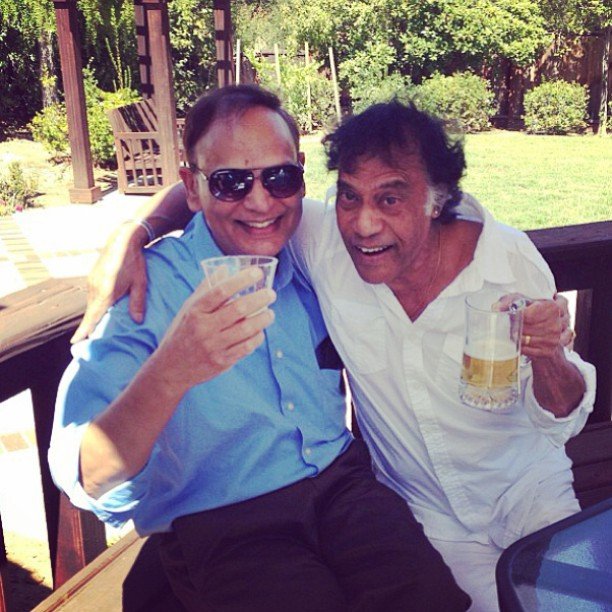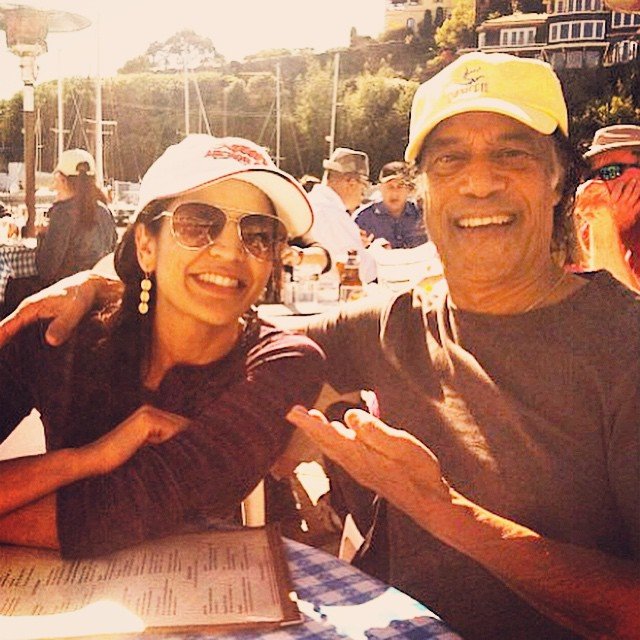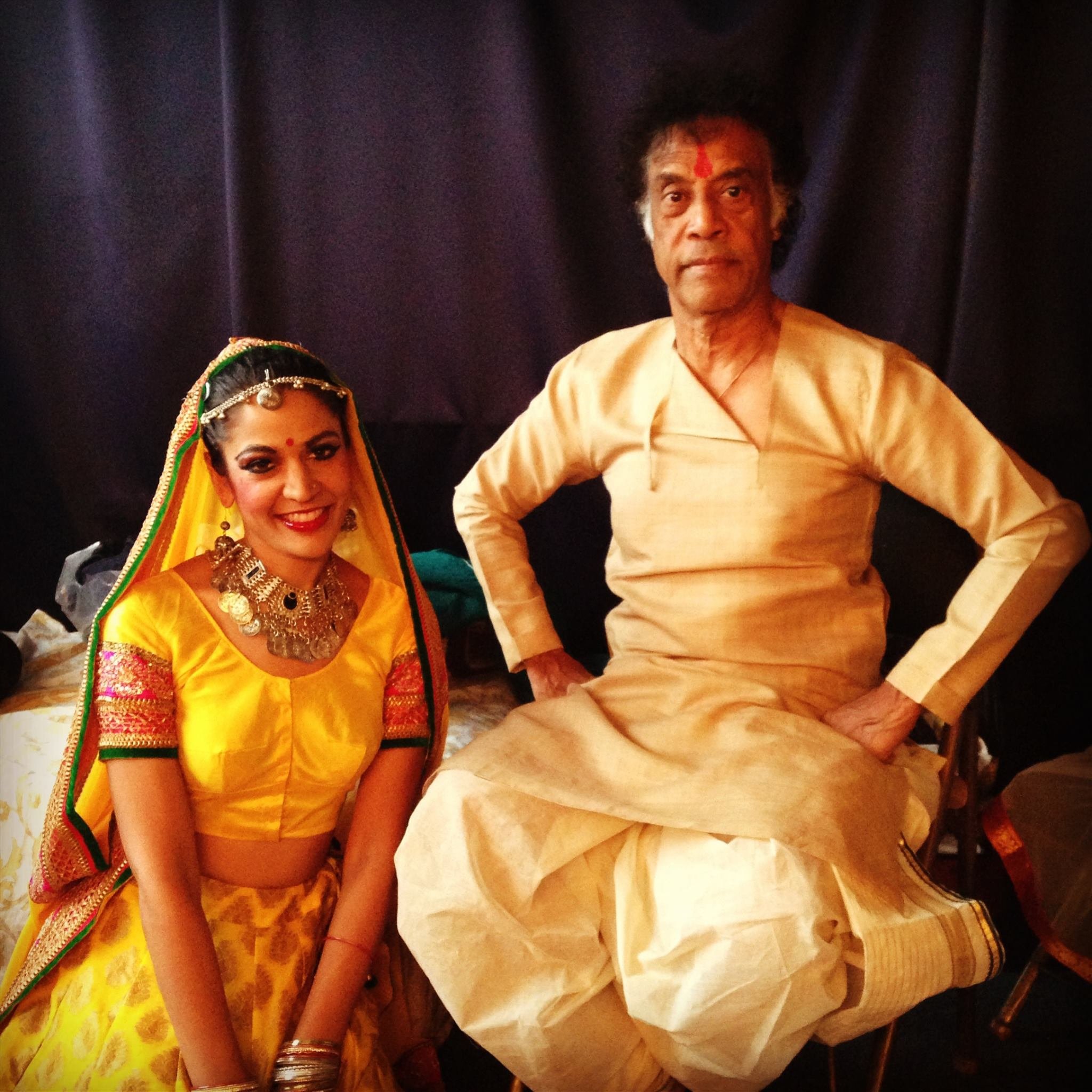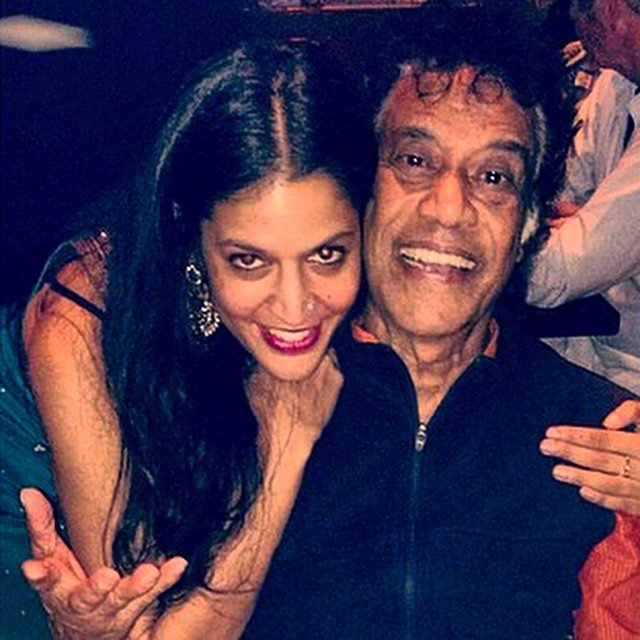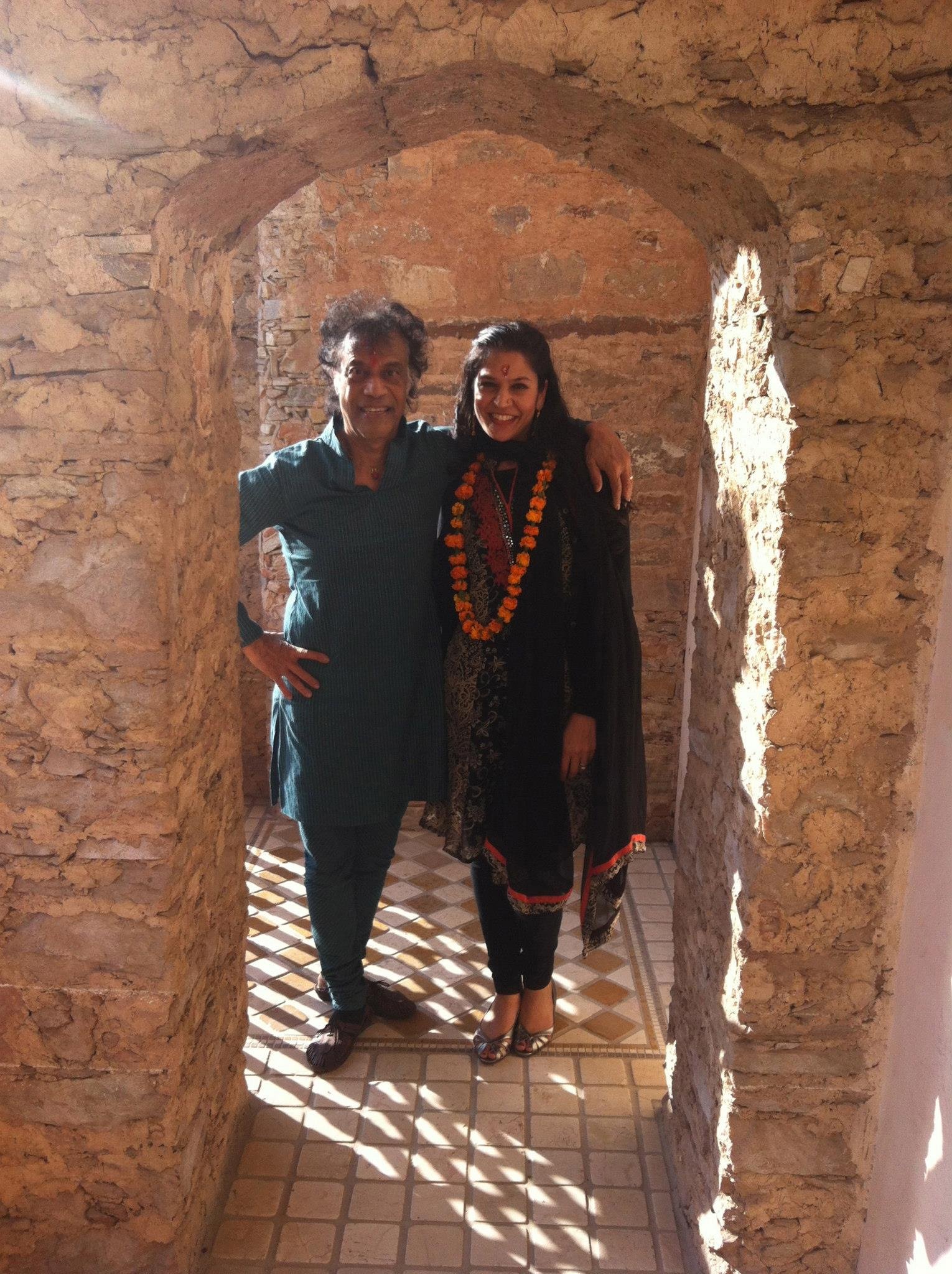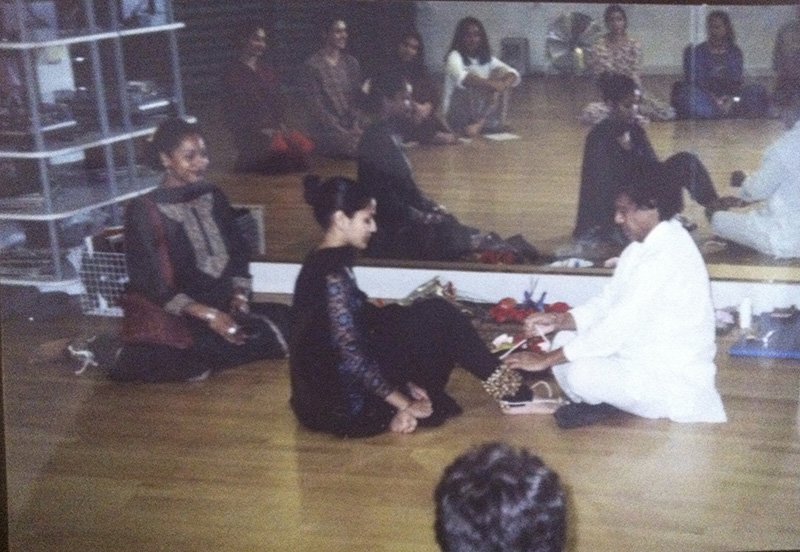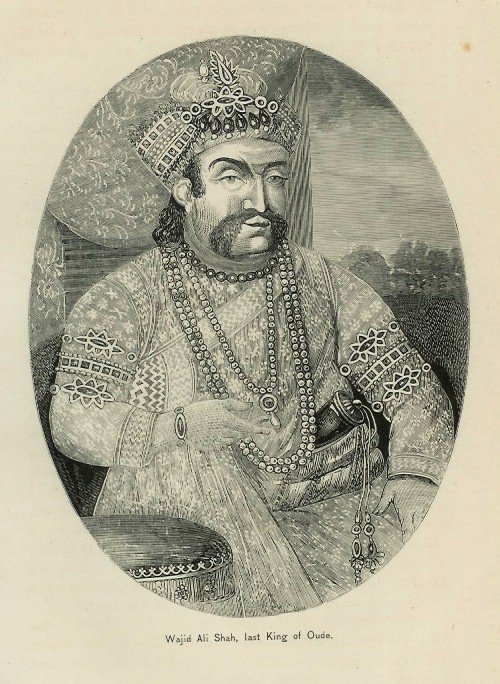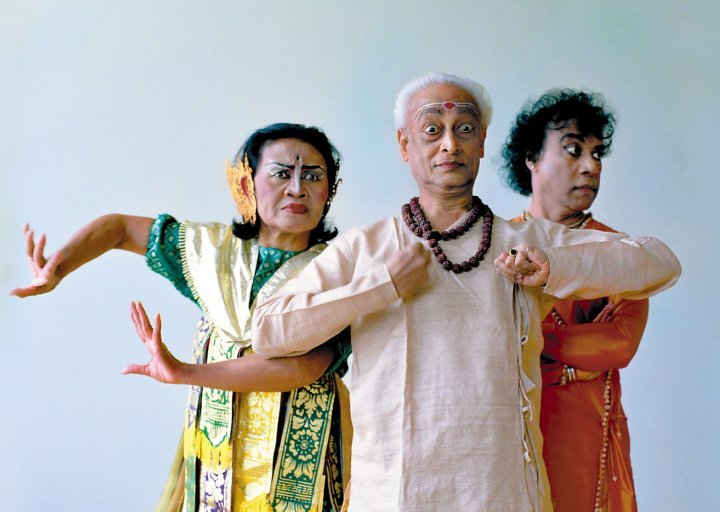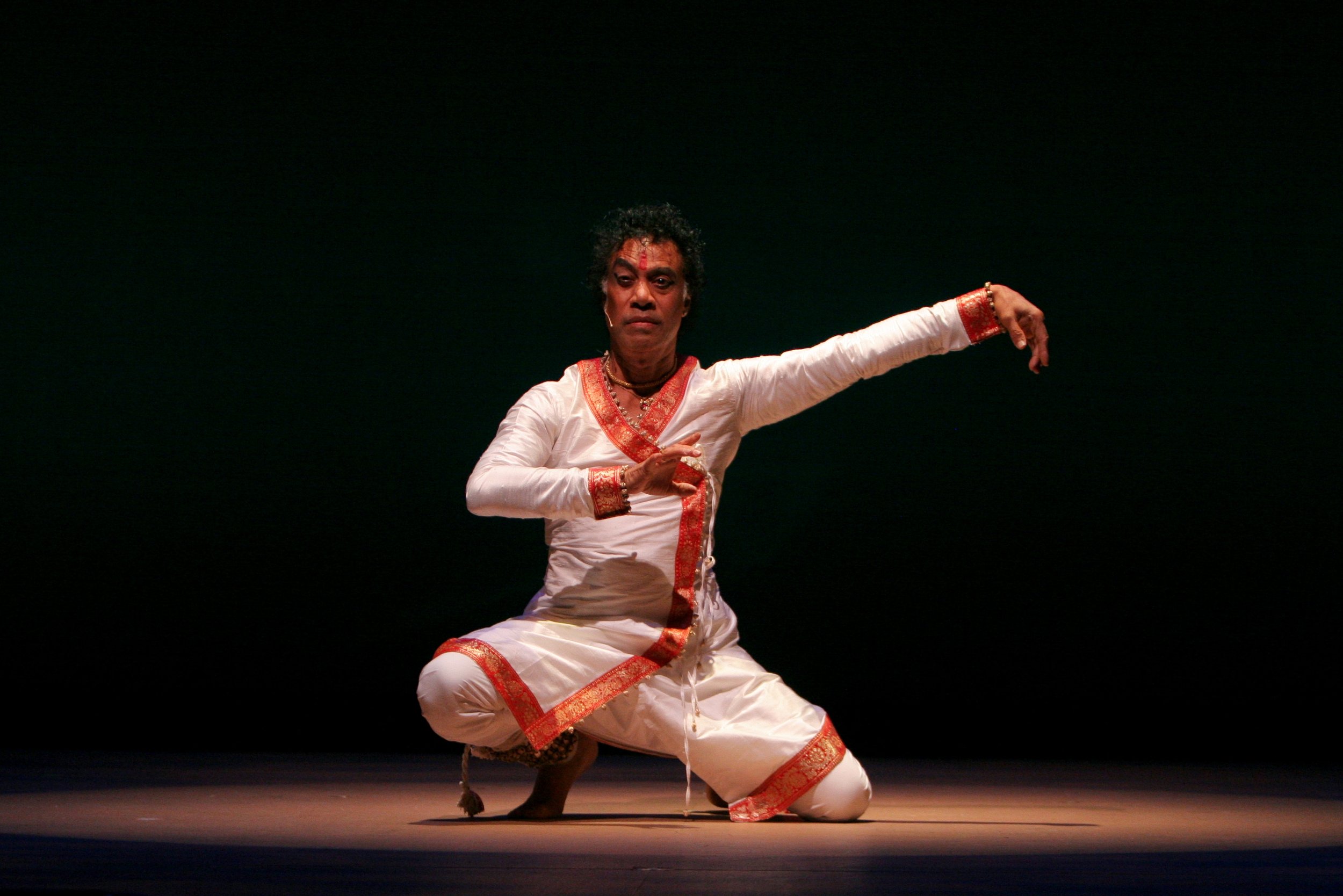
LINEAGE & TRAINING
Rachna Nivas’ lineage traces back directly to the city of Lucknow, India and the court of Wajid Ali Shah, the last nawab of Awadh, who was a great patron of music and dance and a devoted student of kathak. It was through the rich cultural environment of Wajid Ali Shah’s court and his guru, Pt. Thakur Prasadji, that the Lucknow Gharana is believed to have originated. During colonization, after Wajid Ali Shah was dethroned by the British and kathak dance was outlawed, the lineage moved underground to Kolkata and was continued by Thakur Prasadji’s nephews, Pts. Bindadin Maharaj and Kalka Prasad. Bindadin’s three nephews, Pts. Achhan Maharaj, Lachhu Maharaj, and especially Shambhu Maharaj, were instrumental in training the next generation of prominent kathakas, including Achhan Maharaj-ji’s son Pt. Birju Maharaj, Smt. Kumudini Lakhia, Smt. Damayanti Joshi, Smt. Maya Rao, as well as Pandit Ram Narayan Misra and Sri Prohlad Das — guru and father, respectively, of Pandit Chitresh Das, Rachna Nivas’ guru.
“Das carried his guruji’s intensive and all-encompassing training style with him to the United States, where for over 45 years he trained multiple generations of students and disciples in the guru-shishya parampara, evolving the tradition to meet modern times. “
India’s independence brought an era of reclaiming of Indian heritage. Das’s remarkable upbringing and education during this renaissance period for Indian arts and culture were integral to developing the breadth of his artistry and vision, and his mother, a talented Manipuri dancer, and his father, a respected dance scholar, founded Nritya Bharati, an institute of dance, painting, and music in Kolkata. They invited many illustrious artists to teach, including Atomba Singh from Manipur, Gurus Gopal and Krishna Nair from Kerala, and Guru Gunniya from Sri Lanka. At an early age, Das was also deeply inspired by Pt. Uday Shakar, renowned for integrating European theater techniques with Indian dance, creating avant-garde theatrical ballets. In 1955, at age 10, young Chitresh tied strings with his guru Pandit Ram Narayan Misra, marking the beginning of his training in the guru-shishya parampara, or master-disciple tradition. With Pandit Misra, he trained rigorously in both the Lucknow and Jaipur gharanas. When staying with his guru, he would begin his dance at five in the morning and practice for hours on end. A powerhouse of speed, strength, and stamina, young Das also absorbed the nuances of kathak when accompanying his guru to Bow Bazaar to teach baijis, courtesans. “Das carried his guruji’s intensive and all-encompassing training style with him to the United States, where for over 45 years he trained multiple generations of students and disciples in the guru-shishya parampara, evolving the tradition to meet modern times. “
In 1970, Das received a Whitney Fellowship to teach Indian dance at the University of Maryland. With this entrée to the West, he began forging his own path as a pioneer bringing kathak and its rich cultural heritage to America. In 1971, he was invited by Ustad Ali Akbar Khan to join the Ali Akbar College of Music (AACM) in Northern California, where he established a rigorous dance program. Ali Akbar Khansahib’s college supported the development of another abundant period for Indian classical arts– this time, based in the US in San Francisco’s mecca for hippie and counterculture of the 1970s. During its heyday, the Ali Akbar College of Music sponsored several Indian artists of great renown, including Pt. Nikhil Bannerjee, Smt. Lakshmi Shankar, Pt. Shankar Ghosh, Ust. Alla Rakha, Pt. G.S. Sachdev, Pt. Dhyanesh Khan, Pt. Aashish Khan, Ust. Zakir Hussain, Pt. Swapan Chaudhuri, and others. Das was tremendously inspired by Ali Akbar Khansahib’s musical genius and created several choreographed works set to Khansahib’s music.
“Ali Akbar Khansahib’s college supported the development of another abundant period for Indian classical arts– this time, based in the US in San Francisco’s mecca for hippie and counterculture of the 1970s.“
During its heyday, the Ali Akbar College of Music sponsored several Indian artists of great renown, including Pt. Nikhil Bannerjee, Smt. Lakshmi Shankar, Pt. Shankar Ghosh, Ust. Alla Rakha, Pt. G.S. Sachdev, Pt. Dhyanesh Khan, Pt. Aashish Khan, Ust. Zakir Hussain, Pt. Swapan Chaudhuri, and others. Das was tremendously inspired by Ali Akbar Khansahib’s musical genius and created several choreographed works set to Khansahib’s music.
In 1980, Pandit Das created his own dance company, the Chitresh Das Dance Company (CDDC), and institute, the Chhandam School of Kathak. CDDC was the first non-western dance company to receive the “Company grant” from National Endowment of the Arts and the first company to put kathak on the American proscenium stage alongside western dance forms. A consummate performer and creative genius, Das was known for cutting edge choreography: from his Twelve Minutes solo premiered at the 1984 Olympics and semi-autobiographical Sadhana (2001) to CDDC choreographies such as Class Tech (1986), Gold Rush (1990), Pancha Jati (2002, 2014), Sampurnam (2007), Darbar (1999 and 2012), Ramayana (2007), Sita Haran (2009), and Shiva (2013). Nivas, who began her study in 1998, was cast in lead roles for these iconic productions and continues to build upon Das’ works today along with her co-founders of Leela, paying homage to his artistic legacy and continuing his work to elevate kathak dance on US and global stages.
“Nivas, who began her study in 1998, was cast in lead roles for these iconic productions and continues to build upon Das’ works today along with her co-founders of Leela, paying homage to his artistic legacy and continuing his work to elevate kathak dance on US and global stages.”
Das worked collaboratively with many artists, including Dewa Putu Berata, I Nyoman Cerita, and Gamelan Sekar Jaya in Subali-Sugriwa (2000), Kathakali master Govindan Kutty and Balinese doyenne Ni Ketut Arini in East as Center (2003), and Flamenco artist Antonio Hidalgo Paz in Yatra (2014). His longtime collaboration with Emmy award-winning tap artist Jason Samuels Smith, India Jazz Suites (2005-2014), began an enduring relationship with the tap world that produced a second production, India Jazz Progressions (2007), and inspired the documentary film, Upaj: Improvise. This relationship and collaboration continues today in Nivas’ work SPEAK co-created with Rukhmani Mehta and tap artists Dormeshia Sumbry and Michelle Dorrance. Das also deeply valued artistic exchange and community, compelling him to bring artists across generations and disciplines together through festivals such as Kathak at the Crossroads. In 2006, this festival gathered over 30 kathak dancers and collaborative musical artists from the US, Europe, and India for talks, workshops, and performances. Similarly, in 2010, Traditions Engaged featured 50 artists representing eight Indian classical dance and music traditions, with performances and presentations in San Francisco and Los Angeles. Together with her Leela co-founders, Nivas extends this work of artistic community to provide a fertile ground for music and dance development, bringing together emerging and established artists with Leela’s touring festival, Continuum, which premiered in San Francisco in 2019.
Similarly, in 2010, Traditions Engaged featured 50 artists representing eight Indian classical dance and music traditions, with performances and presentations in San Francisco and Los Angeles. Together with her Leela co-founders, Nivas extends this work of artistic community to provide a fertile ground for music and dance development, bringing together emerging and established artists with Leela’s touring festival, Continuum, which premiered in San Francisco in 2019.
Das’s prolific career advanced the field of kathak not only through his choreographies and performances but also through his pedagogical legacy. Rooted in the tradition and training he brought with him from India, Das pushed the technical boundaries of strength, speed, and clarity of footwork, as well as many types of swift and stepping chakkars (pirouettes). In deeply examining Indian philosophy, he evolved kathak as a sadhana (devoted practice) through his preeminent innovation, kathak yoga. This inspired practice challenges dancers to integrate music and dance more fully by simultaneously singing, reciting, and dancing, and sometimes even playing an instrument. Nivas played an instrumental role in advancing Das’ innovation of kathak yoga by pioneering the use of harmonium while practicing this technique, inspiring many other students and disciples to follow in her footsteps. As such, Nivas was cast in an anchor role for Das’ work Shabd (2006), a production that propelled kathak yoga from a solitary meditative practice to a stunningly complex and intriguing performance art. This practice is foundational to Leela Academy’s pedagogical philosophy and provides students with a deep, embodied understanding of the relationship between rhythm and movement.
“Nivas played an instrumental role in advancing Das’ innovation of kathak yoga by pioneering the use of harmonium while practicing this technique, inspiring many other students and disciples to follow in her footsteps.”
The strength of Pandit Das’s vision for the art form has been passed on to many generations of dancers. Rachna Nivas was fortunate to train in the traditional one-to-one guru-shishya parampara for 17 years. Nivas spent thousands of hours under Das’ rigorous training and philosophy to propel his students beyond their physical and mental boundaries to achieve a higher state of consciousness and understanding of oneself. She spent extended periods every year with Das in India in a traditional gurukul setting (disciples and guru living together to train, cook, and carry out chores). It is this aspect of the training - talking, eating, listening to stories, and training on the very land that the lineage was passed down through history, that Nivas believes is at the heart of her unique and unparalleled life experience with a master from the final generation of artists cultivated through India’s rich patronage arts system.
Nivas’ training with Das commenced at a serendipitous intersection of time - when the South Asian diaspora was exploding in the San Francisco Bay Area and there was a great need for leadership within the South Asian community to carry forward and preserve the integrity of Indian art to new generations. Nivas was honored to be appointed by Pandit Das to direct his educational institution, Chhandam School of Kathak. She was instrumental in building the school to become one of the largest and most influential North Indian art institutions outside of India. Under the tutelage of Das, Nivas was impassioned to become an advocate and leader of her community, emboldening pride and ownership within the South Asian diaspora for India’s rich artistic heritage, disenfranchised and discredited for over a century by British colonization. It is her vision to continue to play this role as a torchbearer and to forge a vibrant future for the art form for many generations to come.
“Under the tutelage of Das, Nivas was impassioned to become an advocate and leader of her community, emboldening pride and ownership within the South Asian diaspora for India’s rich artistic heritage, disenfranchised and discredited for over a century by British colonization.“
